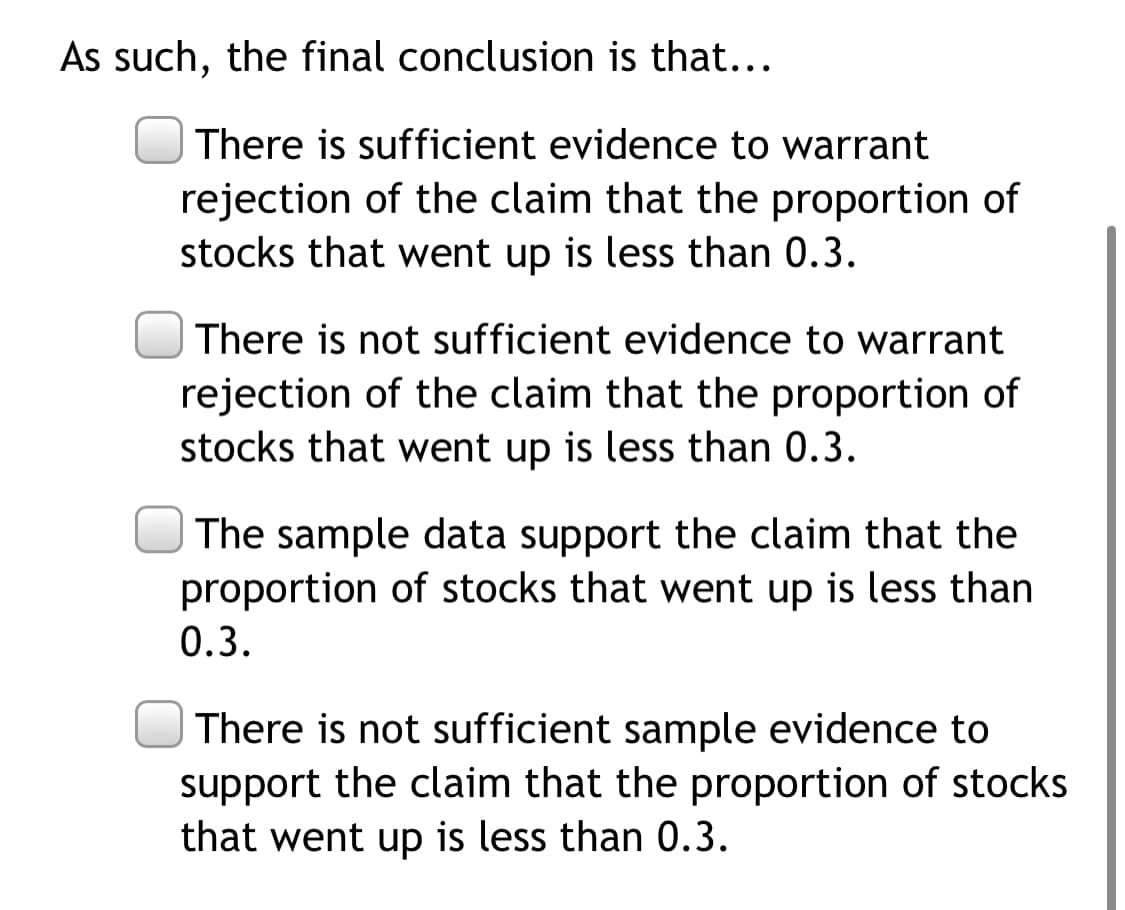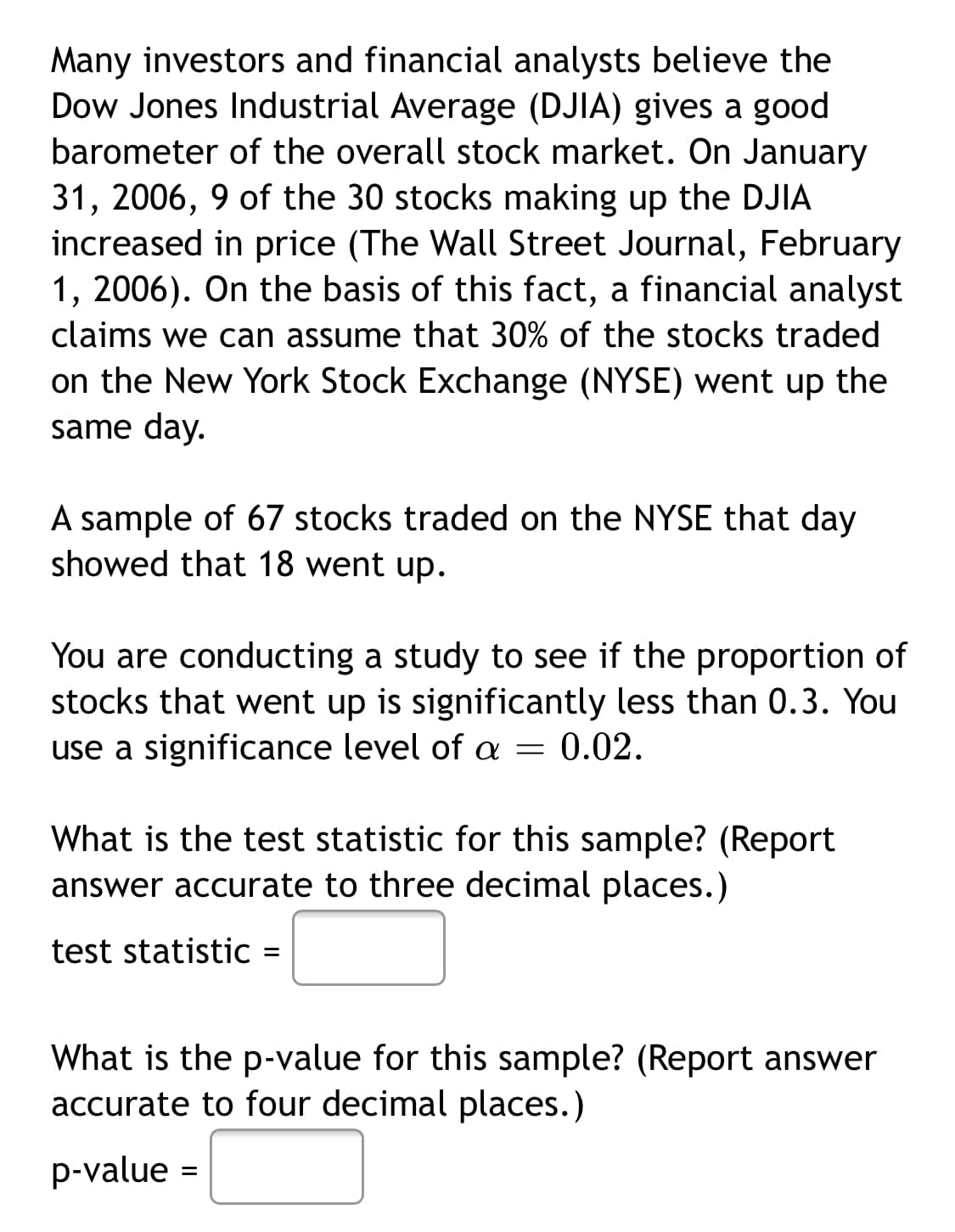As such, the final conclusion is that... There is sufficient evidence to warrant rejection of the claim that the proportion of stocks that went up is less than 0.3. There is not sufficient evidence to warrant
As such, the final conclusion is that... There is sufficient evidence to warrant rejection of the claim that the proportion of stocks that went up is less than 0.3. There is not sufficient evidence to warrant
Glencoe Algebra 1, Student Edition, 9780079039897, 0079039898, 2018
18th Edition
ISBN:9780079039897
Author:Carter
Publisher:Carter
Chapter10: Statistics
Section10.6: Summarizing Categorical Data
Problem 28PPS
Related questions
Question

Transcribed Image Text:As such, the final conclusion is that...
| There is sufficient evidence to warrant
rejection of the claim that the proportion of
stocks that went up is less than 0.3.
There is not sufficient evidence to warrant
rejection of the claim that the proportion of
stocks that went up is less than 0.3.
The sample data support the claim that the
proportion of stocks that went up is less than
0.3.
There is not sufficient sample evidence to
support the claim that the proportion of stocks
that went up is less than 0.3.

Transcribed Image Text:Many investors and financial analysts believe the
Dow Jones Industrial Average (DJIA) gives a good
barometer of the overall stock market. On January
31, 2006, 9 of the 30 stocks making up the DJIA
increased in price (The Wall Street Journal, February
1, 2006). On the basis of this fact, a financial analyst
claims we can assume that 30% of the stocks traded
on the New York Stock Exchange (NYSE) went up the
same day.
A sample of 67 stocks traded on the NYSE that day
showed that 18 went up.
You are conducting a study to see if the proportion of
stocks that went up is significantly less than 0.3. You
use a significance level of a = 0.02.
What is the test statistic for this sample? (Report
answer accurate to three decimal places.)
test statistic =
What is the p-value for this sample? (Report answer
accurate to four decimal places.)
p-value =
Expert Solution
This question has been solved!
Explore an expertly crafted, step-by-step solution for a thorough understanding of key concepts.
This is a popular solution!
Trending now
This is a popular solution!
Step by step
Solved in 3 steps with 1 images

Knowledge Booster
Learn more about
Need a deep-dive on the concept behind this application? Look no further. Learn more about this topic, statistics and related others by exploring similar questions and additional content below.Recommended textbooks for you

Glencoe Algebra 1, Student Edition, 9780079039897…
Algebra
ISBN:
9780079039897
Author:
Carter
Publisher:
McGraw Hill


Glencoe Algebra 1, Student Edition, 9780079039897…
Algebra
ISBN:
9780079039897
Author:
Carter
Publisher:
McGraw Hill
